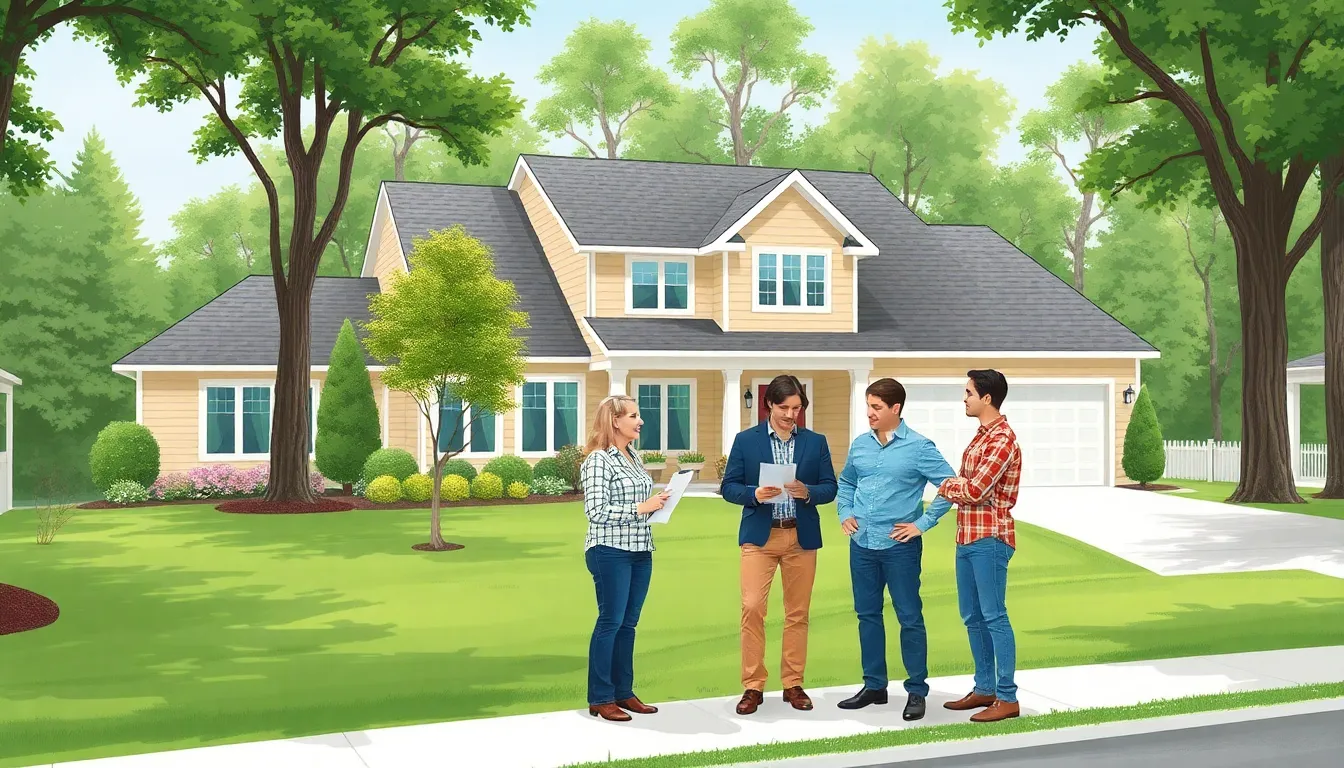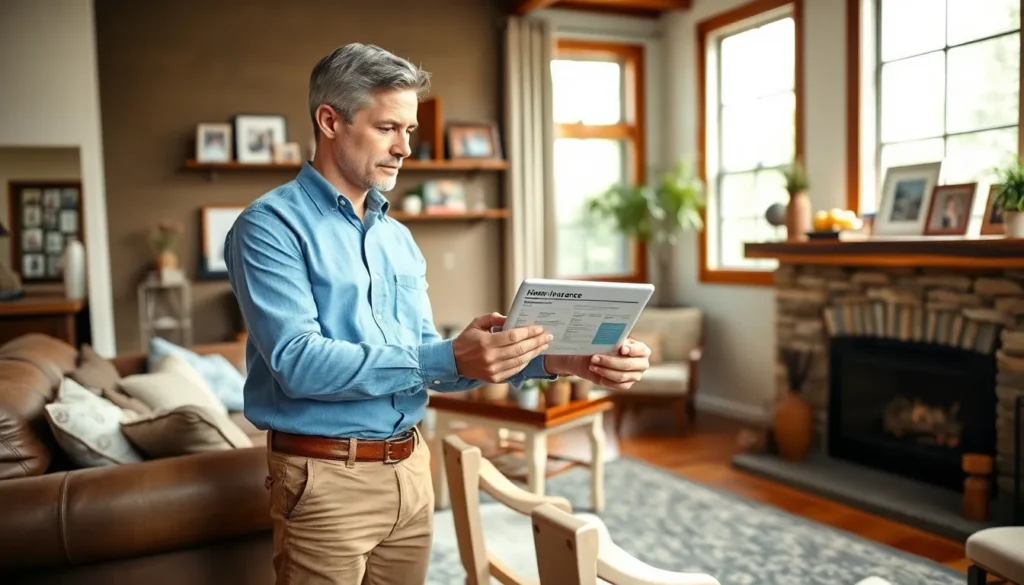When it comes to home insurance, many folks think it’s just another bill to add to the monthly pile. But hold on! Understanding the true value of home insurance can save you from financial heartaches that’ll make your wallet weep. Imagine your living room turning into a water park after a burst pipe or your prized collection of ceramic frogs meeting a fiery demise. Yikes!
Home insurance isn’t just a safety net; it’s your superhero in disguise, ready to swoop in when disaster strikes. Knowing how to assess its value can mean the difference between a smooth recovery and a chaotic scramble. So let’s dive into the world of home insurance value and discover how to protect your castle without losing your mind—or your sense of humor! After all, who wouldn’t want to be the savvy homeowner who laughs in the face of calamity?
Table of Contents
ToggleUnderstanding Home Insurance Value
Understanding home insurance value means recognizing the factors that contribute to determining coverage limits and premium costs. Home insurance value isn’t merely about the market price of the home; it encompasses replacement costs, personal belongings, and liability coverage.
What Is Home Insurance Value?
Home insurance value reflects the amount of financial protection provided against risks and losses. This includes rebuilding the home if it’s damaged, replacing personal items inside it, and covering liability claims. Insurers calculate this value based on replacement cost estimations rather than the property’s market value. Therefore, knowing these distinctions helps homeowners assess adequate coverage for their specific needs.
Importance of Home Insurance Value
Home insurance value holds significant importance in providing financial security for homeowners. Proper coverage protects against unexpected events, minimizing financial losses due to disasters. Homeowners benefit by ensuring their investment is safeguarded against incidents like theft, fire, and natural disasters. Understanding this value empowers homeowners to evaluate their policies and make necessary adjustments for complete protection. Lastly, it prevents underinsurance, which can lead to considerable out-of-pocket expenses during claims.
Factors Influencing Home Insurance Value


Understanding the factors affecting home insurance value helps homeowners ensure they have adequate coverage. Numerous elements can impact these values, including property characteristics, location, market trends, and the types of coverage selected.
Property Characteristics
The unique features of a property significantly influence its insurance value. Size, age, and architectural style all play a role. More space often leads to higher replacement costs. Older homes may face additional challenges due to outdated wiring or plumbing. Unique materials used in construction can also affect the cost of repairs or replacement. Homeowners must assess these characteristics to determine accurate insurance coverage.
Location and Market Trends
Location remains a critical factor in home insurance valuation. Areas prone to natural disasters, like floods or earthquakes, typically incur higher premiums. Crime rates in the vicinity can also impact costs; higher crime rates may lead to increased insurance prices. Market trends shift regularly, influencing the overall value of homes in specific locations. Staying informed about these trends is essential for homeowners to maintain adequate coverage and understand their insurance costs.
Coverage Types and Limits
Coverage types and limits directly affect home insurance values. Policies can include dwelling coverage, personal property coverage, and liability coverage. Different limits can drastically alter premiums; higher limits usually increase costs. Optional coverages, like replacement cost or additional living expenses, add further layers of protection. Evaluating these options is vital for homeowners to ensure they select suitable coverage corresponding to their needs and risks.
Evaluating Home Insurance Value
Evaluating home insurance value requires a systematic approach to ensure adequate protection. Homeowners benefit from understanding the methods for assessing their coverage.
Methods of Assessment
Replace replacement cost estimates with accurate calculations using professional assessments. Consider engaging appraisers or insurance adjusters to provide data on property value. Incorporate online tools that offer instant estimates based on local market conditions and property attributes. Evaluate coverage limits alongside personal belongings to ensure all valuables are accounted for. Adjust assessments regularly, especially after major renovations or changes in market conditions. Document any unique features that might enhance the home’s insurance value, such as energy-efficient systems or upgraded appliances.
Common Mistakes to Avoid
Underestimating the required coverage often leads to financial strain during claims. Avoid ignoring the impact of location on insurance premiums, as certain areas may attract higher rates. Failing to review policies annually may result in outdated coverage levels that don’t reflect current needs. Neglecting to assess liability coverage might expose homeowners to unnecessary risks, especially if they frequently host guests. Disregarding personal belongings like electronics and jewelry can cause significant gaps in coverage. History shows that many homeowners overlook these factors, leading to potential losses in tough times.
Securing the Best Home Insurance Value
Finding the best home insurance value involves careful consideration and strategic decision-making. Homeowners should evaluate multiple policies to determine the best coverage for their specific needs.
Comparing Policies
Comparing policies allows homeowners to identify differences in coverage, deductibles, and premiums. Start by obtaining quotes from at least three insurance companies to ensure a comprehensive comparison. Each company offers unique benefits and coverage options, which can significantly impact the home insurance value. When reviewing policies, check for additional coverages like flood or earthquake insurance. For instance, policies that include these extras provide better security in high-risk areas. Each variable affects overall cost and protection, so an informed choice can lead to substantial savings and peace of mind.
Utilizing Discounts and Bundles
Utilizing discounts and bundles can significantly lower home insurance costs. Homeowners should inquire about available discounts for factors such as installing security systems or achieving high safety ratings. Many insurers also offer multi-policy discounts when combining home and auto insurance, leading to savings up to 25%. Assessing these options helps reduce premiums while maintaining essential coverage levels. In addition, loyalty discounts for long-term customers may further enhance savings. Each discount maximizes overall home insurance value, ensuring comprehensive protection without overspending.






